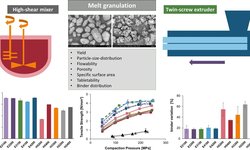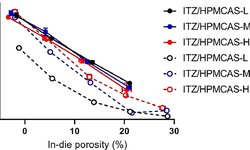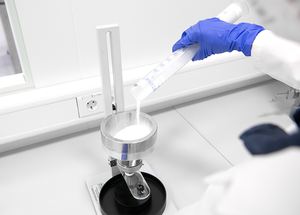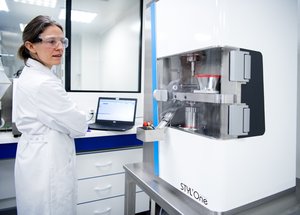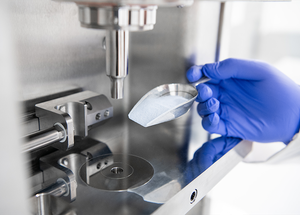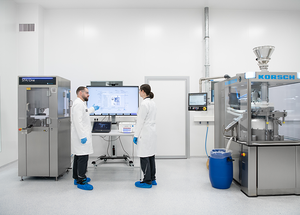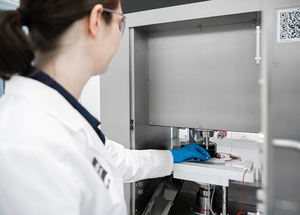Scientific papers
The increasing significance of higher tableting speeds in the pharmaceutical industry prompts a need for comprehensive studies on the mechanical properties of hypromellose. Surprisingly, there is a lack of recent investigations, and none have explored variations among suppliers. This study aims to fill this gap by examining the flow and compaction properties of different grades of hypromellose (type 2208) sourced from three suppliers, with a specific focus on the influence of compression speed. Flow properties were assessed through flow time, shear cell, Carr index, and constant B from the initial segment of the Heckel profile. Compaction properties were analyzed using "out-of-die" Heckel, Walker, and Kuentz-Leuenberger models, along with two tensile strength profiles (tabletability and compactibility) and elastic recovery. The compaction process employed both an instrumented single-punch press and a high-speed rotary press simulator.
Notably, Methocel™ DC grades and Benecel™ K4M, characterized by larger, rounder, and smoother particles, exhibited superior flow properties compared to other materials, with Metolose® K100M displaying the least favorable flow. Benecel™ K100M and Metolose® K100M showcased the best compaction properties overall, closely followed by Metolose® K4M. Heckel analysis revealed the highest compressibility for Benecel™ K100M, followed by both Methocel™ DC grades. The Kuentz-Leuenberger model demonstrated no practical superiority over the Heckel model within the applied compression pressure range. Strain rate sensitivity results indicated that Methocel™ K4M DC was the least affected by changes in tableting speed, followed by Methocel™ K100M DC and both grades of Benecel™, while both grades of Metolose® were the most sensitive. The study also explored the impact of moisture on the compaction process.
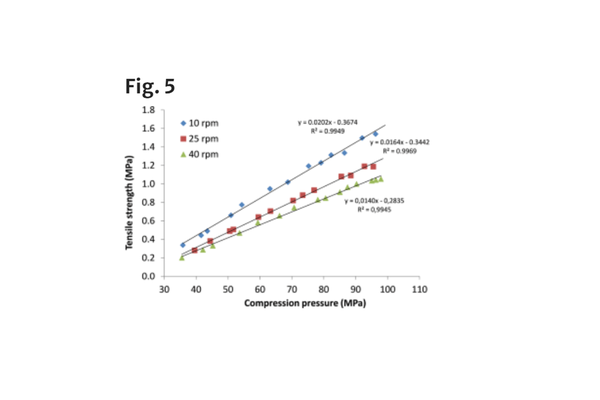
Comments
No comments posted yet.
Add a comment

